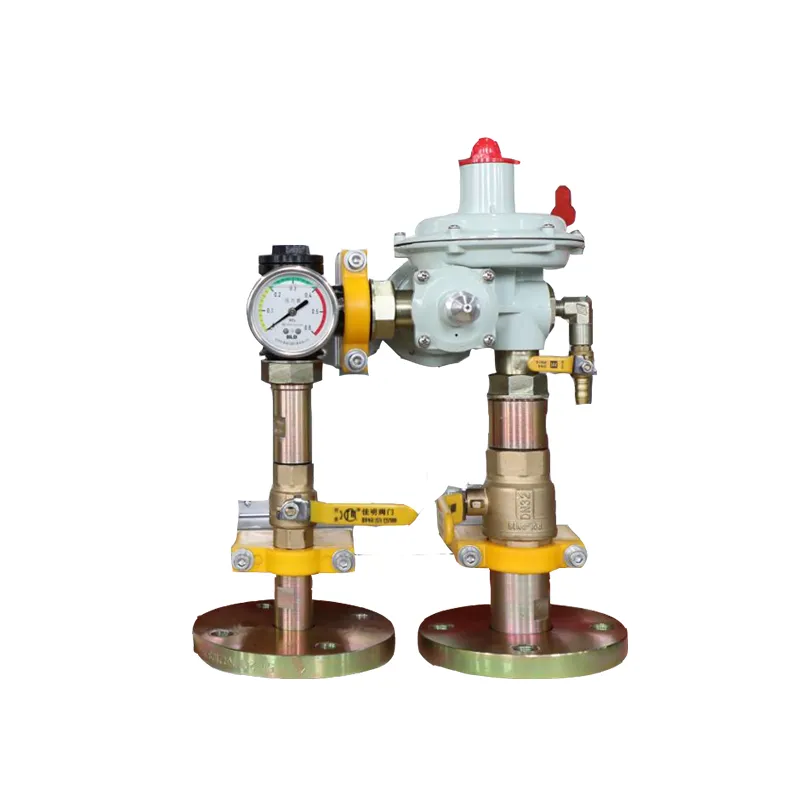
Nov . 22, 2024 01:13
Back to list
gasifier
Gasifiers Revolutionizing Energy Production
In the quest for sustainable and efficient energy solutions, gasifiers are emerging as a transformative technology that converts carbon-rich materials into synthesis gas, or syngas. This process not only contributes to reducing greenhouse gas emissions but also supports the transition to a more circular economy. By understanding the underlying principles, design variations, and potential applications of gasifiers, we can appreciate their significant role in addressing energy challenges.
At its core, gasification is a thermal conversion process that takes place in a gasifier—a reactor designed to produce syngas from various feedstocks, including biomass, coal, and waste materials
. The process typically occurs at high temperatures (between 700 °C and 1,200 °C) in an oxygen-starved environment, which allows for incomplete combustion. The primary components of syngas are hydrogen, methane, and carbon monoxide, which can be utilized for electricity generation, heat production, or as intermediates for chemical synthesis.One of the most significant advantages of gasification is its ability to use a wide range of feedstocks. Traditional fossil fuels, such as coal and natural gas, have been the mainstay of energy production for decades. However, their extraction and use contribute to significant environmental damage and carbon emissions. Gasifiers allow for the incorporation of renewable biomass and waste materials, transforming potentially harmful byproducts into energy-rich syngas. This not only mitigates waste but also promotes energy independence and diversification.
gasifier

There are several types of gasifiers, each with its unique design and operational characteristics. The most common types include fixed-bed, fluidized-bed, and entrained-flow gasifiers. Fixed-bed gasifiers utilize a stationary bed of feedstock, and as gasification occurs, the material moves downward through different stages—drying, pyrolysis, and gasification. Fluidized-bed gasifiers use a bed of sand or other material that is suspended by the upward flow of gas, allowing for better heat transfer and chemical reactions. Entrained-flow gasifiers operate at high temperatures and pressures, where feedstock is injected as a fine powder and rapidly converted into syngas. Each design has its advantages and specific applications, tailored for different feedstocks and production scales.
The versatility of syngas is another factor that enhances the attractiveness of gasification technology. Syngas can be utilized for multiple purposes it can be burned directly in gas turbines for electricity generation, used in internal combustion engines, or processed further to produce chemicals such as methanol and ammonia. Additionally, it can serve as a building block for Fischer-Tropsch synthesis, leading to the production of liquid hydrocarbons that can replace fossil fuels in transportation. This flexibility not only addresses energy needs but also encourages the development of a more sustainable chemical industry.
Despite these advantages, the implementation of gasification technology faces challenges. Initial costs for gasifier construction and establishment can be high, often requiring significant investment and advanced technological expertise. Moreover, operational challenges related to feedstock variability and tar formation can complicate the process. However, ongoing research and innovation are addressing these issues, with new materials and configurations being developed to optimize performance and reduce costs.
In conclusion, gasification is an innovative technology that has the potential to revolutionize energy production by converting carbon-rich feedstocks into valuable syngas. As the world shifts toward sustainable energy solutions, gasifiers offer a pathway not only for electricity generation but also for the sustainable production of chemicals and fuels. By embracing this technology, we can move closer to a low-carbon future, decreasing our reliance on fossil fuels, and promoting a more resilient and sustainable energy landscape. Continued research, investment, and policy support will be crucial in harnessing the full potential of gasifiers in the global energy transition.
Next:
Latest news
-
Safety Valve Spring-Loaded Design Overpressure ProtectionNewsJul.25,2025
-
Precision Voltage Regulator AC5 Accuracy Grade PerformanceNewsJul.25,2025
-
Natural Gas Pressure Regulating Skid Industrial Pipeline ApplicationsNewsJul.25,2025
-
Natural Gas Filter Stainless Steel Mesh Element DesignNewsJul.25,2025
-
Gas Pressure Regulator Valve Direct-Acting Spring-Loaded DesignNewsJul.25,2025
-
Decompression Equipment Multi-Stage Heat Exchange System DesignNewsJul.25,2025

